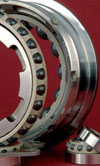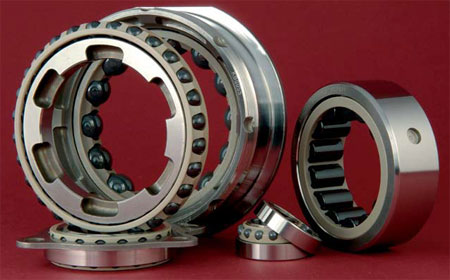Getting the best from rolling element bearings
 Once problems with rolling element bearing reliability have been chased in NASCAR Sprint Cup Series competition, is it worth trying to gain performance improvements?
Once problems with rolling element bearing reliability have been chased in NASCAR Sprint Cup Series competition, is it worth trying to gain performance improvements?
The rolling element bearing does consume some power. While mechanical losses are worth a little more than you might think, there are actually two gains made for every reduction of mechanical loss implemented.
Every horsepower retained through eliminating loss is a horsepower of extra power available from the engine. But there is also an additional gain made because every inefficiency comes out of the engine as heat and a good proportion of that waste power has to be removed through the radiators - either water or oil.
Taking a clean sheet approach to engine design, there is a predictable method of confronting the limitations of rolling element bearings and how far they can be pushed. For a given load requirement, a smaller bearing can help tremendously with the detail packaging of the drives or the ancillaries, and can help shrink the size and therefore weight of many parts of the engine.
The degree to which the load is shared out between adjacent balls or rollers is a function of the precision within the bearing. Any variation in size from one ball or roller to the next will result in an uneven sharing of the load and will give rise to larger peak loads than if all parts were exactly the same size.

As a consequence the greater the precision in the manufacture of the bearing, the better the load carrying capacity. Indeed in top line motor sport where works teams might be working directly with bearing manufacturers, they could go one step further and actually measure and grade elements to assemble into hand-built matched component bearings. This then gives as near even load distribution as possible.
The same goes for non-circularity in either race. This is a function of the precision of manufacture of the races, but also the uniformity of the bearing housing and shafts. This is also a big issue because as big loads go through lightweight structures the resulting deflections will tend to make the bearing races deflect.
While we normally find the amounts of deflection microscopic, when you are trying to share the loads between relatively stiff rollers or balls, the loaded shape of the housings and shafts has to be considered.
With a too-tight fit on either race, a builder potentially closes up the running clearance in the bearing and increases the loads too much. Finally, the effects of running temperatures need to be considered on the bearing system, focusing not only on heat and cold, but also on any transient running conditions in the case where one component might heat up faster than others.
With the rolling element bearing, one must also examine the prospects of micro-welding. As the element continues to move on, the surface is torn apart resulting in adhesive wear. Most people believe that micro-welding only occurs between similar materials, but this is not the case. Micro-welding can even take place between steel and ceramic surfaces with some combinations of load, temperature and lubrication.
Fig. 1 - Rolling element bearings from Cerobear
Written by Anne Proffit